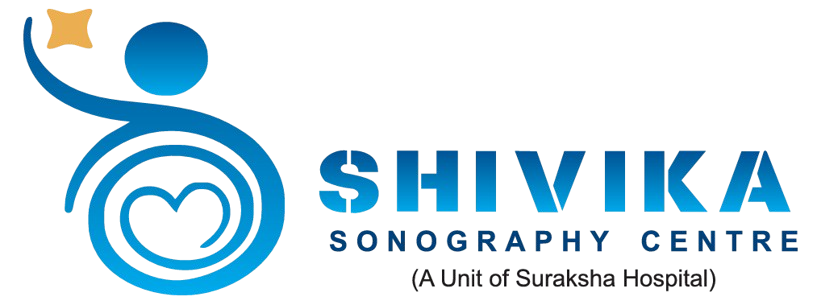1. Early Pregnancy Sonography/Dating Scan
An early pregnancy scan, also known as a dating scan, is a crucial ultrasound examination performed in the first few weeks of pregnancy. The ideal time for this scan is between 6-8 weeks.
Methods This scan can be done using either:
Transvaginal Sonography (TVS): The preferred method, providing clearer images and more accurate results.
Transabdominal Sonography (TAS): An alternative method, used when TVS is not feasible.
Purpose The early pregnancy scan serves several essential purposes:
Confirming Pregnancy Location: Verifying whether the pregnancy is intrauterine (normal) or ectopic (abnormal).
Detecting Fetal Cardiac Activity: Checking for the baby's heartbeat.
Confirming Gestational Age: Verifying the expected delivery date based on the last menstrual period (LMP) and adjusting it if necessary.
Evaluating Surrounding Structures: Examining the uterus, ovaries, and surrounding areas for any abnormalities, such as fibroids or cysts.
This scan provides valuable insights into the early stages of pregnancy, ensuring a healthy start for both mother and baby.
2. NT NB Scan/ Level I Scan
The NT NB scan, also known as the Level I scan, is a critical ultrasound examination performed between 11 weeks and 13 weeks 6 days of pregnancy. This scan is essential for detecting various congenital abnormalities that can impact the baby's growth and development.
Key Conditions Detected
Anencephaly: Underdevelopment of the skull and brain.
Neural Tube Defects: Abnormalities in the brain and spine.
Down's Syndrome: Chromosomal disorder leading to mental retardation and other somatic issues.
Nuchal Translucency (NT) Measurement During the scan, the Nuchal Translucency (NT) is measured. NT is the thickness of the fluid at the back of the baby's neck. A higher NT value indicates a higher risk for Down's syndrome and other congenital abnormalities.
Nasal Bone (NB) Evaluation The presence or absence of the nasal bone is also assessed. Absence of the nasal bone can be an indicator of potential issues.
Importance and Timing This scan is crucial, and its timing is critical. It can only be performed between 11 weeks and 13 weeks 6 days, making it essential to be vigilant about the dates.
3. Anomaly/Target/TIFFA/Level II Scan
The Level II scan, also known as the TIFFA scan, Target scan, or Anomaly scan, is a comprehensive sonography examination performed between 18 weeks and 22 weeks of pregnancy. This detailed scan assesses the fetus’s major organ systems, identifying potential anomalies or abnormalities that may impact growth and development.
The Level II scan includes:
Detailed Fetal evaluation: Examination of the head, neck, face, chest, heart, abdomen, back, limbs, hands, and feet.
Doppler evaluation: Assessment of uterine arteries and umbilical artery to ensure normal blood and nutrient supply.
Placenta evaluation: Checking for low-lying placenta.
Cervical length assessment: Measuring the cervix to predict potential preterm labor risks.
Liquor quantification: Evaluating the amount of amniotic fluid surrounding the fetus.
Detectable Conditions This scan can identify over a thousand potential conditions, including:
Anencephaly.
Cleft lip & palate.
Congenital heart diseases.
Diaphragmatic hernia.
PU valve issues.
Renal abnormalities (absent/ectopic kidney).
Club foot.
Neural tube defects.
Phocomelia.
Sacral agenesis.
Down syndrome and other chromosomal abnormalities.
Importance and Limitations The Level II scan is crucial for early detection of potential anomalies, allowing for informed decision-making regarding pregnancy termination or preparation for postnatal care.
However, limitations exist:
Maternal body habitus: Excess fat can impede scan quality.
Inadequate liquor: Insufficient amniotic fluid can hinder evaluation.
Fetal position: Inadequate positioning may require re-scanning.
Late-developing anomalies: Some conditions may not be detectable until later in pregnancy.
At any point during the scan, the gender of the baby is not revealed as it is a punishable offense under the PCPNDT Act in India.
4. 3D/4D/5D Fetal Sonography
Advanced sonography technologies, including 3D, 4D, and 5D, offer improved fetal imaging, enabling better evaluation of the baby's face, limbs, and spine in real-time.
3D Sonography 3D sonography captures images of the baby in three planes, generating colorful, 3D images with depth perception.
4D Sonography 4D sonography takes 3D imaging a step further, allowing for real-time viewing of the live baby.
5D Sonography 5D sonography produces high-definition (HD) images of the baby's face, enhancing the pregnancy experience.
Ideal Timing and Considerations The optimal time for capturing a fetal face image is between 28 and 32 weeks. However, to minimize multiple visits, this scan is often combined with the Level II scan.
Capture the Magic: Baby's First Photo Our state-of-the-art technology allows us to provide stunning images of your baby's face—memories to cherish for a lifetime.
5. Routine Fetal Well-Being Scan
A Fetal Wellbeing Scan is a routine ultrasound examination that can be performed at any stage of pregnancy to assess the health and development of the baby.
This scan evaluates:
Fetal growth
Fetal orientation
Fetal cardiac activity
Fetal body movements
Liquor volume
Placenta position
Cervical length and os assessment
Previous C-section scar evaluation
Common Concerns Addressed:
Lower abdominal pain and heaviness.
Decreased fetal movement.
Vaginal leaking or bleeding.
Labor pains or false contractions.
Informing Delivery Planning This scan provides crucial information to the obstetrician for informed decision-making regarding delivery.
6. Obstetrics Colour Doppler
Obstetrics Colour Doppler is a critical sonography examination performed between 30-34 weeks of pregnancy to assess blood flow and nutrient supply from mother to baby.
Assessed Vessels
Right and Left Uterine Arteries.
Umbilical Arteries and Vein.
Middle Cerebral Arteries.
Ductus Venosus.
Aortic Isthmus (if needed).
High-Risk Pregnancies For high-risk pregnancies, Doppler evaluation may be recommended weekly or bi-weekly to closely track blood supply to the baby.
Clarifying the Difference
Colour Sonography for Fetal Face: Uses 3D/4D/5D technology for detailed images.
Obstetrics Colour Doppler: Assesses blood flow and nutrient supply to the fetus.
Understanding these differences ensures a more informed and empowered pregnancy journey.


